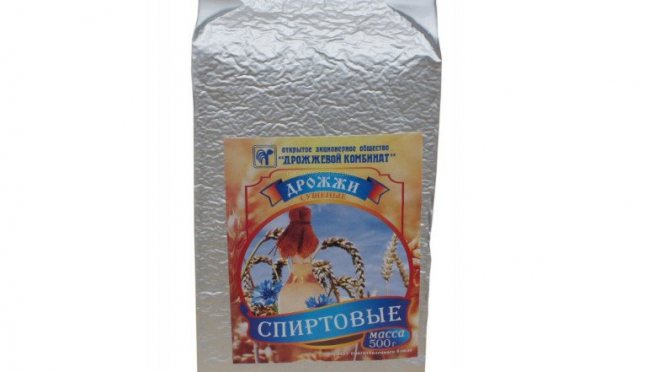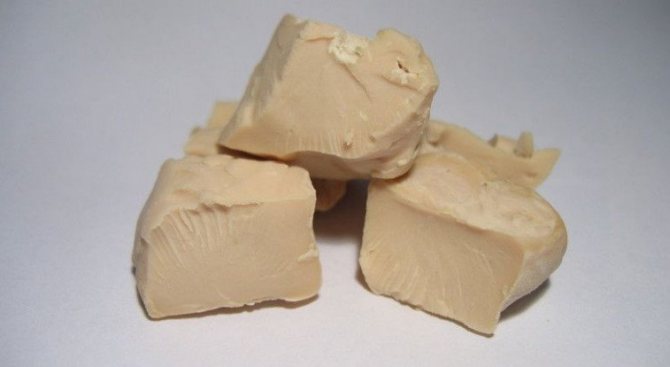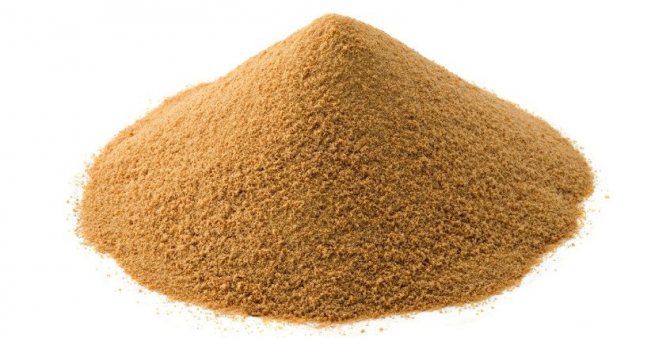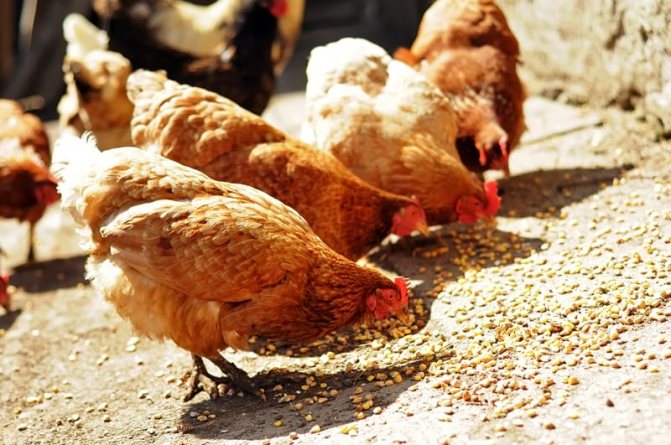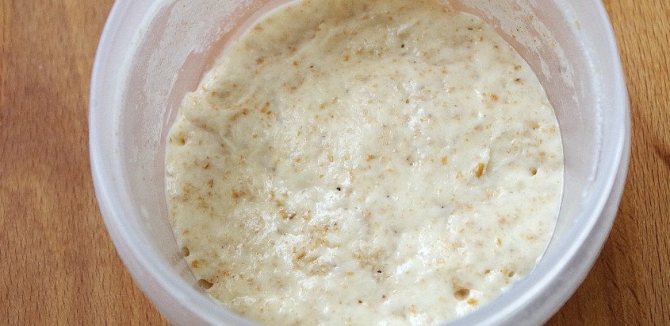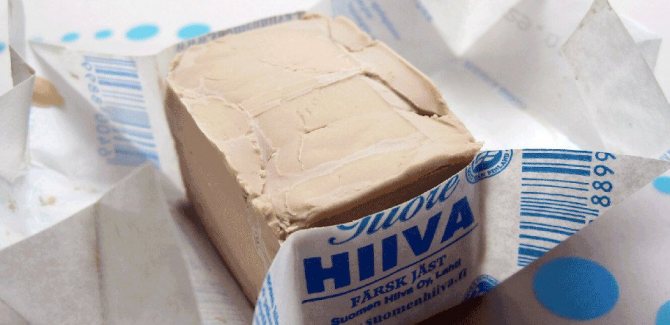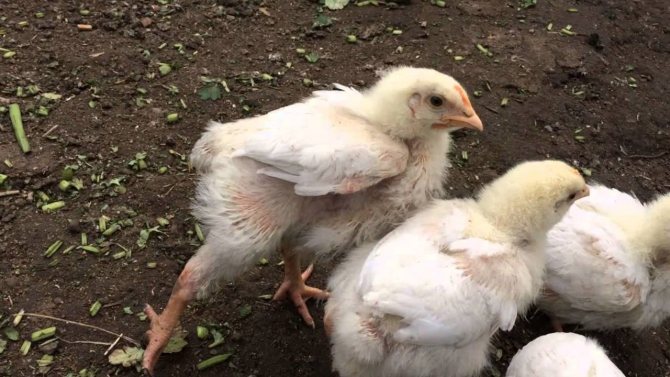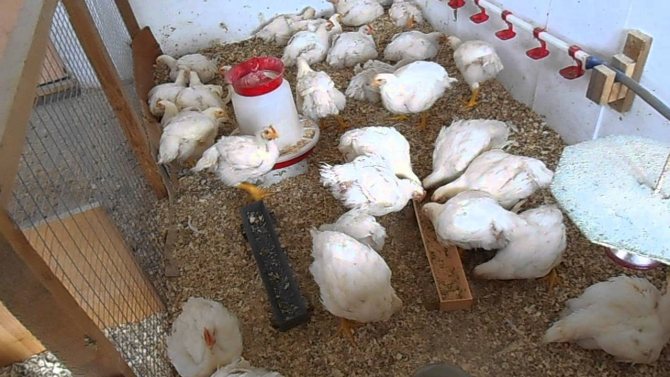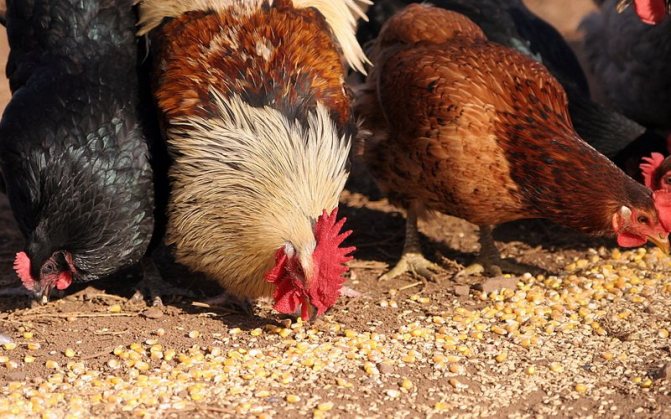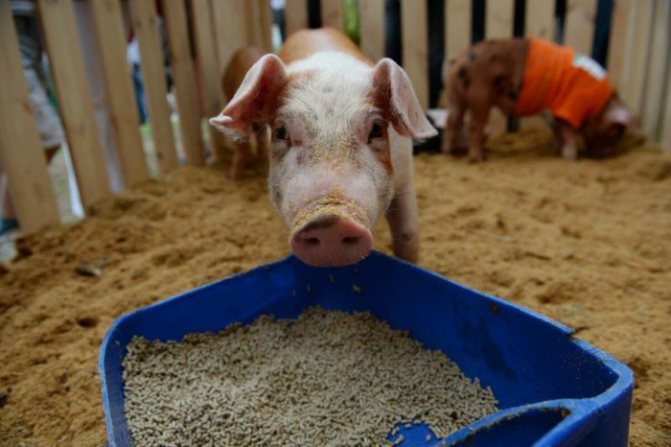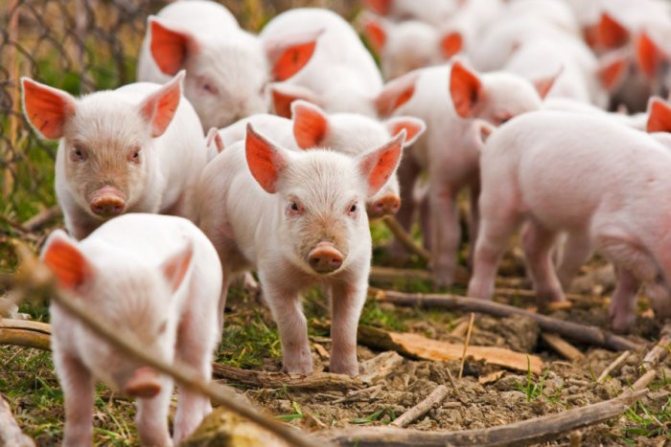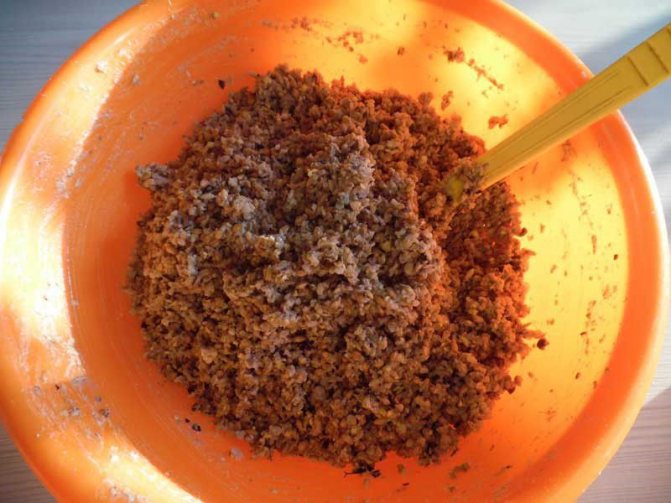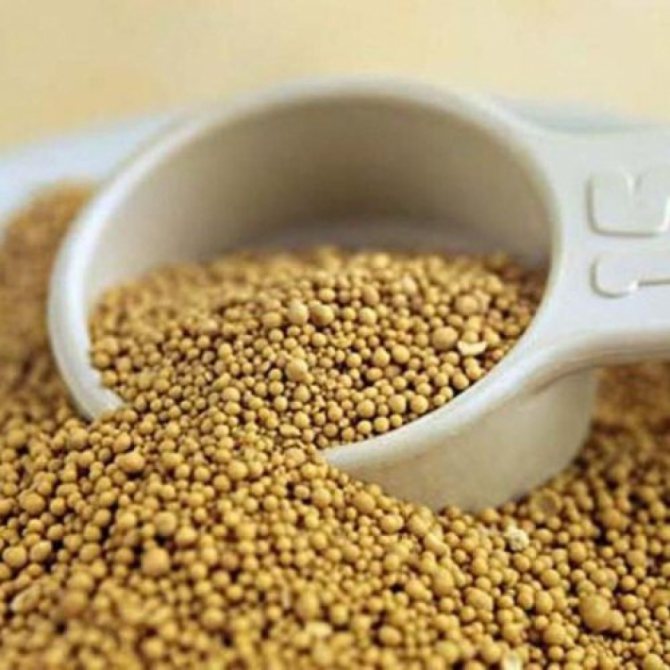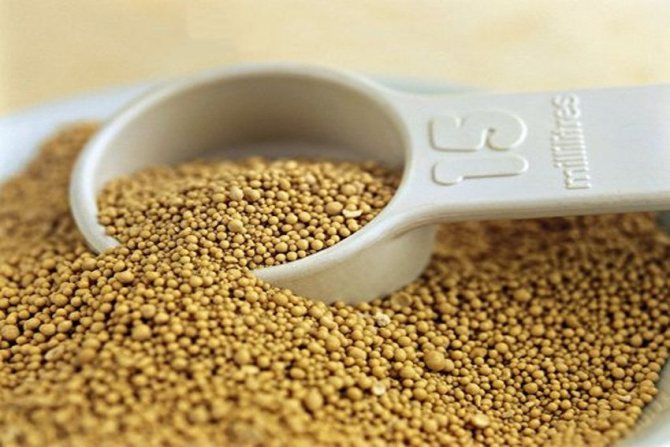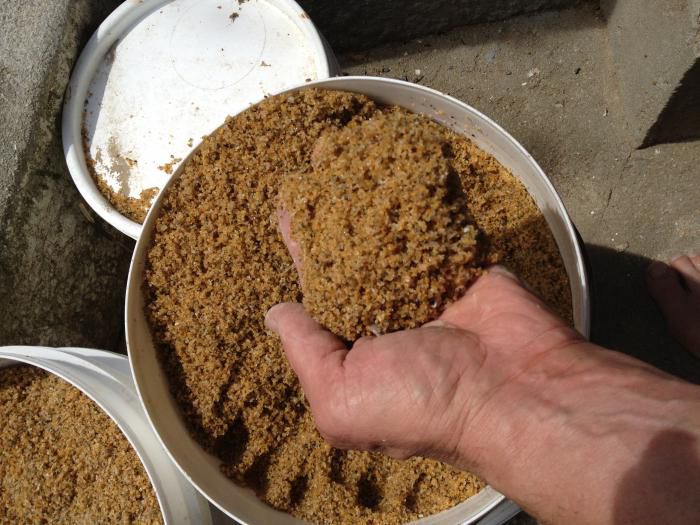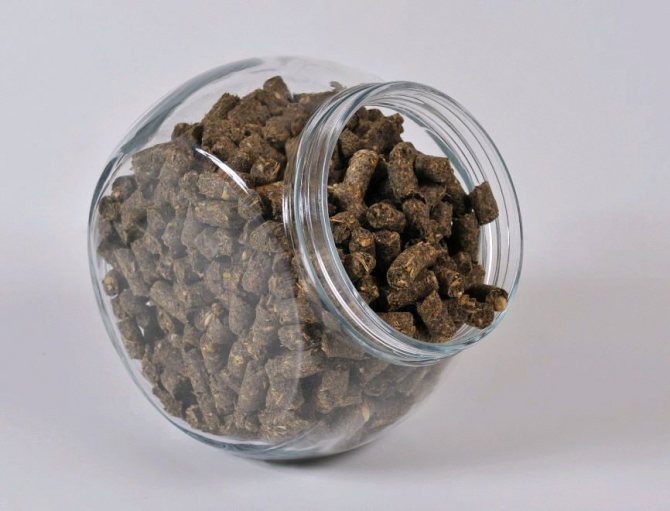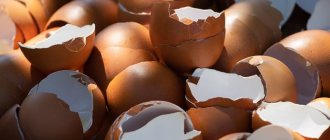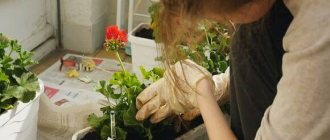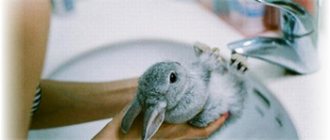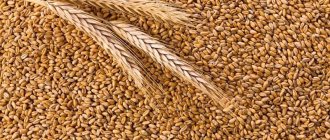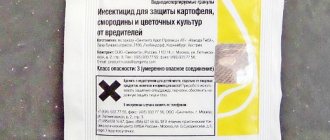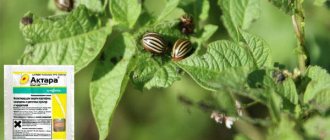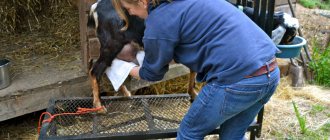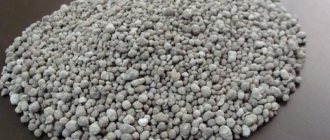Raising chickens on their farm, every breeder wants to make a good profit in the form of delicious meat and large eggs. Therefore, chicken keepers have always shown interest in ways to increase the productivity of poultry. The question arises about the effectiveness of the application tofeed yeast for chickens, how to give them correctly
and how much?
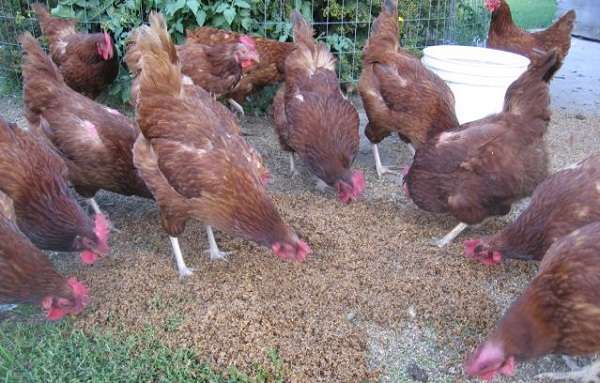
What is yeast
Yeast belongs to unicellular fungi that do not have a mycelium, moreover, they do not have a fruiting body. The size of such organisms is very small, and therefore there are more than 20 billion mushrooms in 1 gram of the product. This group includes over 1500 biological species.
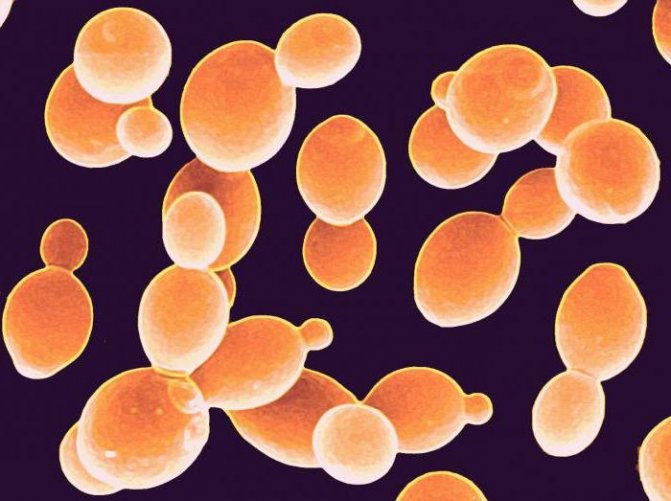

Yeast under the microscope
The fodder variety of yeast is grown in a special way in various factories, where they are engaged in the production of alcoholic products, paper, starch, sugar, etc. In poultry farming, you can use only a fodder variety or baking, but only of good quality.
Basic characteristics and properties
At the initial stages, the cultivation of yeast was carried out on waste of the paper industry, as well as on sawdust, the remains of sugar production, waste from factories for the production of alcohol. Today, petroleum hydrocarbons are also actively involved in production. The indicative yield of growing products is from 200 to 300 kg from 1 ton of nutrient waste.
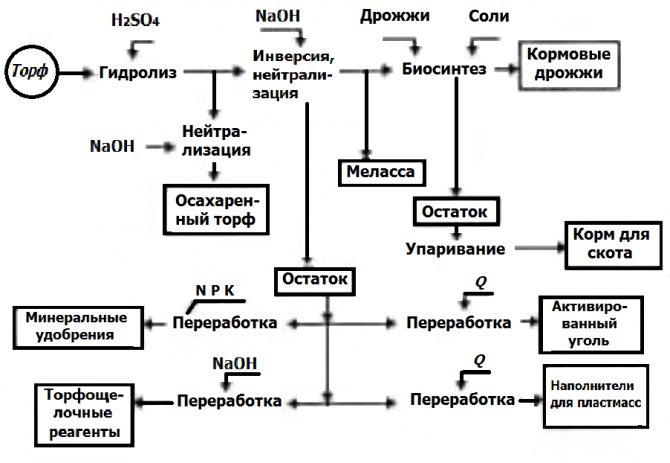

Peat processing technology into feed yeast
The raw materials are:
- seed husk;
- corn cobs;
- reed;
- wood;
- straw.
Today the production process is carried out in specially equipped workshops of specialized enterprises.
Feed additive
With regular yeast feeding for the poultry industry, the following positive dynamics is observed in the condition of chickens:
- normalization of digestive processes: increased appetite (fast muscle gain), especially important when growing broilers;
- in the poultry industry, it has been noticed that with the regular use of yeast feed, the number of eggs in the clutch increases, as well as the percentage of fertilized production;
- the introduction of yeast into the diet during feather change in chickens results in more rapid growth of new feathers. The feather is fuller, smoother and more shiny;
- it will be useful for all livestock to receive feed with yeast as a prevention of vitamin deficiency, this is very important in winter.
The use of stale or expired yeast leads to digestive upset in chickens.
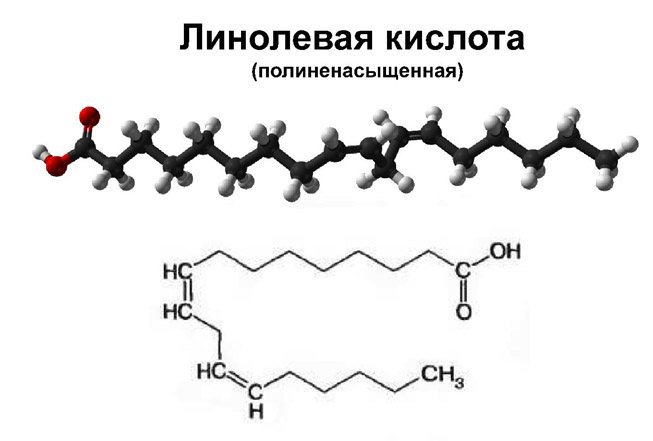

Linoleic acid
Yeast contains several essential and essential acids for feathery acids:
- linoleic - helps to maintain a healthy body of birds at the cellular level;
- oleic - normalizes metabolic processes;
- arachidonic - supports the immune system and helps fight disease.
Varieties
There are several types of feed additives. They can be:
- Classic fodder - obtained from the remains of alcoholic products.
- Hydrolytic - made from food and woodworking waste.
- Special concentrates - rich in protein and vitamins. Separate derivatives of oil products and ethanol are used as raw materials.
In the production process, they resort to the use of acetic acid and monosaccharides obtained from vegetable / fruit products.The cultivation of yeast is considered a complex technical process, but less money is spent on it than on the manufacture of compound feed.
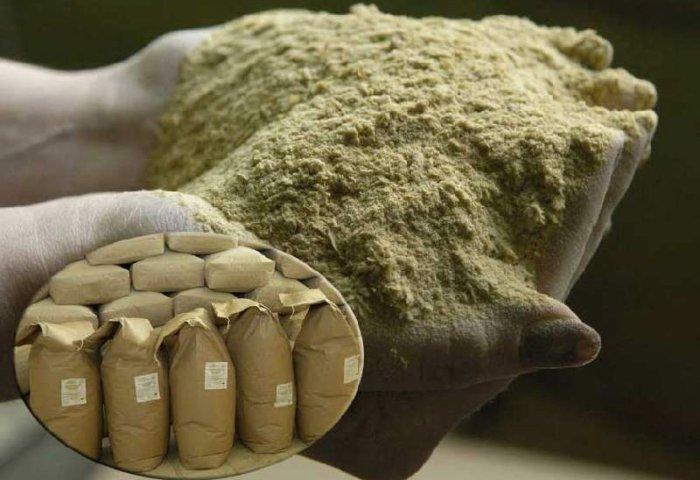

Yeast feed
Adding yeast to chicken feed makes the feed more nutritious and tasty for the birds. Mushrooms are mixed with grain or mash, which includes vegetables and other additives. The process itself consists in the rapid multiplication of the yeast fungus in a favorable environment for it. During this, the following happens:
- production of protein compounds, which increases the nutritional value of feed;
- alcoholic fermentation begins, lactic acid bacteria are formed, due to them the reproduction of putrefactive bacteria stops.
Recipes
Making chicken feed yourself takes longer. And if you buy them, then the profitability of such a business will significantly decrease. But only with natural feed can you get environmentally friendly products.
For laying hens, the following recipe is suitable: 5 kg of corn, 1.5 kg of wheat, 0.3 kg of peas, 1 kg of sunflower meal, 0.8 kg of meat and bone meal, 0.6 kg of fish meal, 0.5 kg of feed yeast, 0, 15 kg of vitamins, 0.02 kg of salt. Chickens up to 5 weeks old are given yeast with caution according to this recipe: 0.45 kg of corn, 0.15 kg of wheat, 0.1 kg of barley (ground), cake - 0.08 kg, fish meal - 0.05 kg, herbal - 0.02 kg, meat and bone - 0.020 kg, fodder yeast - 0.020, ground chalk - 0.01 kg, fodder fat - 0.020 kg.
It is suitable for chicks in both directions. It is necessary to monitor the reaction to yeast. For any undesirable symptoms, they are excluded from the diet of the chickens.
How can yeast be done
Before laying the yeast, it is necessary to grind the components of the feed (for example, grain) as much as possible. For the process to work properly, very small fractions must be present.
Yeast is carried out in the following ways:
- sponge;
- unpaired;
- sourdough.
Using dough
Dough is prepared, having previously acquired the following components:
- water - 1 liter (+ 40 ° С);
- crushed grain - ½ kg;
- yeast - 20 grams.
All components must be mixed well and placed in a warm place for 4 hours. After the dough is ready, it is necessary to add crushed grain (2.5 kg) and water - 2 liters. Mix everything well again, put in heat for the same period. The prepared food is added to the mash at the rate of 20% of the total amount of food.
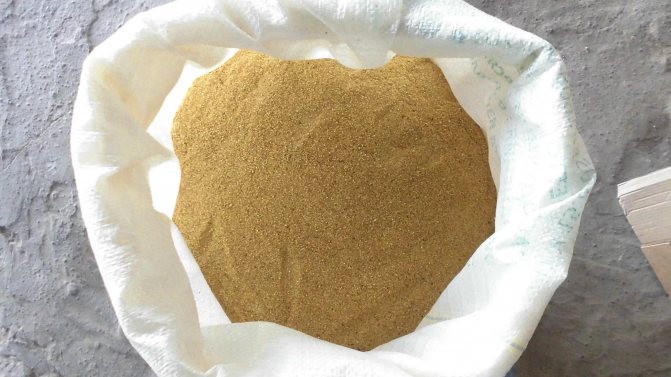

Feed yeast
How to cook without using dough
The second recipe looks like this:
- grain - 1 kg;
- warm water - 1.5 liters;
- yeast - 200 grams.
Stir the yeast with grain and water, let it ferment for 6 to 7 hours. While this process is in progress, the components are periodically stirred to provide an inflow of oxygen. In the event that the liquid has been absorbed into the mass, still warm water 200-400 ml is added.
The resulting mixture is given to the bird after 8 hours in the amount of 20 grams per bird. Yeast is given either daily or every other day.
The shelf life of yeast feed is 24 hours. You can freeze several portions, but at the same time take into account that the benefits of such food will be several times less.
Yeast starter
The third option is as follows:
- dry yeast - 20 grams;
- warm water - 1 liter;
- crushed grain - 1 kg.
Initially, you need to prepare a solution by mixing the yeast with water until they dissolve, then put the grain and let the mixture brew for 5-6 hours. Then the starter culture is added to the grain feed, in the total mass, calculated for one-time feeding of all chickens. It remains to add warm water to make the food look like a thick porridge, and let the mixture stand for 8 hours.
Preparation of yeast starter culture
If the leaven still remains, then it can be poured into a glass container, closed with a lid and placed in the refrigerator. The solution is suitable for use for 7 days.
Feeding rates
Chickens consume a lot of food.
They are omnivorous, but feed them according to the rules:
- Chickens are given food strictly on schedule.
- Portions are rationed.
- With a standard three meals a day, breakfast is given immediately after waking up, dinner - an hour before the lights are turned off or the chickens are driven into the chicken coop, and lunch is exactly in the middle between breakfast and dinner.
- For breakfast they give home-made mash, at lunch - mash or mixed fodder, for dinner - crushed grain or mixed fodder.
These rules are the same for all domestic birds, more detailed schemes differ for layers and broilers.
Layers
Feeding greatly affects the number of eggs obtained from the hen.
Birds begin to fly worse if the food:
- Excess or insufficient;
- Poor in vitamins and minerals, especially calcium;
- It is given not according to the schedule, but at any time.
Up to two months of age, chickens of egg breeds are not limited in feed. At this time, the main organs of the chicken develop, and poor nutrition leads to developmental delay and underdevelopment of the main organs.
- After this period, future layers begin to restrict food and are fed at the rate. In the first 2 months of life, chickens gain weight and get fat, which leads to a decrease in egg production.
- From five months, adolescent chickens are transferred to the diet of laying hens. From this moment until the start of oviposition, their nutrition should include an increased amount of protein food, which is necessary for the development of reproductive organs.
It can be meat or fish meal, any lactic acid products, even broths. During this period, yeast is especially useful for laying hens.
Similar publications
How to make the right diet for chickens
Dec 6, 2019
Blue iodine for chickens
Dec 5, 2019
Important: Mixtures with a high protein content should not be stored for more than a few hours. They are prone to spoilage and can cause sourness in the entire diet.
- As soon as the chicken starts laying, the percentage of protein in its food is reduced, but the percentage of calcium is increased. They are rich in: chalk, shell rock, shells. Each hen needs to eat 3-4 g of calcium per day.
- Chickens laying white eggs need to give half of the calcium in powder, half in pieces of 2-4 mm. For carriers of yellow, the proportion of powder should be 30%, and the rest should be in pieces. This is due to the difference in shell formation.
Broilers
From the moment they hatch, broilers are not restricted in food. For the first 10 days of life, chicks should have round-the-clock access to food, then they are fed hourly.
Broilers are fed with either ready-made, purchased or home-made mixtures.
The former are divided into:
- Starting;
- Fattening;
- Finishing.
They are given strictly at the age recommended by the manufacturer, since they contain a different percentage of the substances necessary for broilers.
Important: In the first week of life, poor quality and unbalanced feed is the leading cause of death in broiler chicks.
Power features:
- Babies receive their first food during the first day of life. It consists of a mixture of finely chopped hard egg and semolina.
- From the second day, finely chopped greens and dairy products are introduced into the diet. Fresh milk cannot be given, chickens vilify from it.
- On the fifth day, sources of minerals and vitamins are added to the diet.
- From the seventh day, broilers are switched to mixtures for older age, then you can start giving yeast feed.
How much yeast feed is given to broiler and egg livestock
Broilers should receive a diet rich in protein, the content of this substance should not fall below 22-24% of the total amount of feed. Layers need something less nutritious, but rich in vitamins. In the following table, you can see the approximate ration for birds related to different production areas.
| Broilers | Name of feed | Amount in grams | Egg chickens | Name of feed | Amount in grams | ||
| Various types of crushed grains (corn, wheat, barley, pea) | 100 | Crushed Cereals in | 70 | ||||
| Sunflower cake | 10-15 | Yeast additive to grain mix | 20 | ||||
| Yeast Supplement | 20 | Wheat bran | 15-20 | ||||
| Boiled potatoes | 40 | Boiled potatoes, vegetables, including seasonal | 20 | ||||
| Table salt | 1 | Herbal flour | 5-7 | ||||
| Table salt | 1 | ||||||
Composition of feed yeast
Check out these articles as well
- The best red grapes
- What can and can not be given to turkeys
- Top dressing of winter wheat
- Buckfast bee breed
The composition of feed yeast is quite rich:
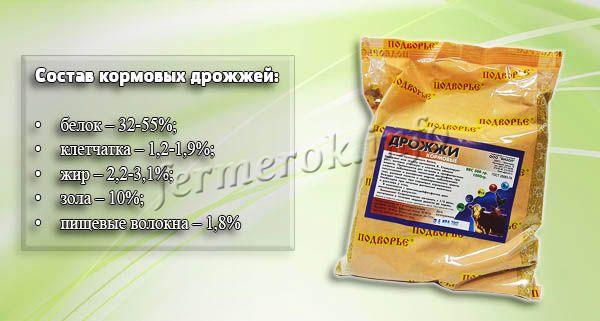

Composition of feed yeast
- protein - 32-55%;
- fiber - 1.2-1.9%;
- fat - 2.2-3.1%;
- ash - 10%;
- dietary fiber - 1.8%.
According to GOST 20083-74, dry feed yeast must contain:
- vitamins of group B, C;
- minerals: phosphorus, chromium, nickel, potassium, sodium, iron, selenium, calcium, zinc, manganese, etc .;
- lysine, methionine, tryptophan.
How to feed laying hens in winter
Question, what to feed chickens in winter, occurs in any novice poultry farmer. After all, the productivity of chickens often falls in the winter. An important role in the egg production of chickens is played by both the premises for keeping laying hens and feeding laying hens in winter.
First things first laying hens in winter Barley (grain) must be present in the diet. Oats are required in the diet of birds that incubate eggs, or for chickens, whose eggs are subsequently incubated. A brood of chickens with oats in their diet will be stronger and healthier, so to speak, is a scientifically proven fact, verified by personal experience. You cannot do without granulated chicken feed. Wheat is especially useful for chickens if it is germinated (it is used as a vitamin supplement). Put wheat grains in any dish convenient for you and fill with water, after 3 - 4 days, when the grains hatch, you can feed the chickens. I do not recommend germinating a large batch of grain at once, because if you do not regularly change the water during prolonged soaking, this mass will ferment and deteriorate. Also the necessary compound feed for laying hens in winter you can do it yourself.
Equal shares of wheat, barley, oats, and necessarily sunflower cake. We load all this into the grain crusher and the compound feed is ready. The bird pecks on this mash with appetite.
| Bran (necessarily wheat) also go to feed for hens in winter... You can make top dressing from them. To do this, you need ordinary baker's yeast 100g. |

